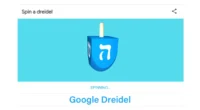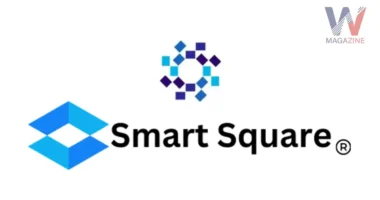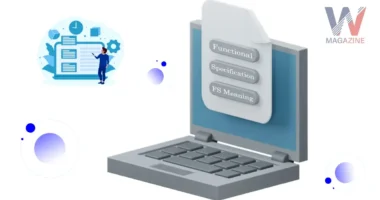Table of Contents
- Key takeaways
- Introduction
- Working of Anon Vault
- Advanced Encryption Technologies
- Zero-Knowledge Architecture
- Mitigating Data Breach Risks
- Multi-Factor Authentication
- User Control & Regulatory Compliance
- User of Anon Vault
- Conclusion
- FAQ’s
- 1. What is Anon Vault?
- 2. How Does Anon Vault Protect my Data?
- 3. What is Zero-Knowledge Architecture?
- 4. What is End-to-End Encryption (E2EE) and How Does it work?
- 5. How do I Set Up an Account with Anon Vault?
- 6. What Types of Files can I Store on Anon Vault?
- 7. Who Should use Anon Vault?
- 8. Can I Share Files Stored on Anon Vault with Others?
- 9. Can Anon Vault Access or View my Data?
- 10. How is Anon Vault different from other cloud storage providers?
The Essential Privacy Tool for the Digital Age
Key takeaways
- Privacy-Centric Platform: Anon Vault focuses on user privacy with a zero-knowledge architecture, ensuring no one but the user can access their data.
- End-to-End Encryption (E2EE): All data is encrypted on the user’s device and remains secure during transmission and storage.
- Zero-Knowledge Architecture: Even Anon Vault cannot decrypt or view stored data, enhancing user control and security.
- Multi-Factor Authentication (MFA): Provides additional security by requiring multiple verification methods for account access.
- User-Friendly Design: The platform offers an intuitive setup and customizable security protocols for ease of use.
- Compliance with GDPR and CCPA: Ensures data protection compliance, making it suitable for users concerned with regulatory requirements.
- Flexible Access Controls: Users can define access levels for files, ensuring only authorized individuals can view or modify sensitive data.
- Variety of Users: Ideal for professionals, journalists and everyday users needing enhanced privacy and data protection.
- Mitigation of Data Breach Risks: Advanced encryption and MFA help prevent unauthorized access, even in the event of a breach.
- Robust Security for Sensitive Information: The platform supports storing confidential documents, personal records and legal files securely.
Introduction
In today’s hyper-connected world, digital privacy has become a critical concern for individuals, businesses and organizations. The rise of sophisticated cyber threats, including data breaches, identity theft and unauthorized access has prompted a demand for more advanced and reliable privacy solutions. Personal and sensitive information, whether professional or personal, is vulnerable to malicious actors who exploit weaknesses in conventional security systems.
This is where Anon Vault enters the scene—a cutting-edge service designed to offer unparalleled privacy and security.
The platform provides a suite of features that prioritize data protection, confidentiality and user control, allowing individuals to safeguard their identities and sensitive information. Utilizing advanced encryption technologies, zero-knowledge architecture and a user-centric approach, Anon Vault is positioning itself as an essential tool for ensuring data privacy in the digital age.
Working of Anon Vault
Anon Vault’s platform is engineered to be user-friendly, intuitive, and secure. One of the main challenges for privacy-focused services has always been the complexity that comes with heightened security protocols. Many users shy away from using such tools due to their technical nature, which can often be difficult to navigate. Anon Vault, however, aims to strike a balance between ease of use and high-level security, ensuring that the platform can cater to both tech-savvy professionals and average users.
1) Seamless Account Setup & Security Configuration
The user onboarding process is designed to be straightforward and accessible. Upon registering, users are guided through a simple yet comprehensive setup process, during which they configure their account’s security settings. Anon Vault ensures that each user’s experience is tailored to their specific needs, allowing them to fine-tune security measures based on their level of concern or the sensitivity of the data they wish to protect.
2) File Encryption & Access Control
Once users are on the platform, they can easily upload files for storage. However, the simplicity of the platform does not compromise security in any way. Every file uploaded to Anon Vault undergoes end-to-end encryption (E2EE), meaning the data is converted into a coded format that can only be deciphered by the user.
Additionally, users can configure access settings for each file, ensuring that only authorized parties can view or interact with the content. This granular control allows individuals and organizations to confidently share sensitive information, knowing that unwanted third parties cannot gain access.
3) Additional Security Measures
For users requiring even more robust security, Anon Vault offers customizable security protocols, such as multi-factor authentication (MFA). MFA requires multiple verification methods—such as a password, a smartphone authentication code or biometric data—before granting access to the user’s account or files. This added layer of protection makes it exceedingly difficult for malicious actors to breach accounts, even if they manage to compromise one form of verification.
In sum, Anon Vault delivers a streamlined yet secure experience, providing an intuitive platform for managing sensitive files like bank statements, legal documents, medical records and more. Users can trust that their data remains safe from prying eyes, even in the face of increasingly sophisticated cyber threats.
FYI: Anon Vault acts same like Safe Deposit Boxes. The only difference between them is that the Anon Vault is online & Safe Deposit Boxes are physical.
Advanced Encryption Technologies
Encryption plays a central role in ensuring data security within the Anon Vault ecosystem. Encryption is the process by which data is transformed into an unreadable format, which can only be deciphered with the appropriate decryption key. This is a critical defense against unauthorized access, as even if data is intercepted, it cannot be interpreted without the necessary keys.
1) End-to-End Encryption (E2EE)
Anon Vault employs End-to-End Encryption (E2EE) as a fundamental security measure. This type of encryption encodes data on the user’s device before it is transmitted to the Anon Vault servers. As a result, only the user holds the decryption keys, meaning that even the service provider itself is unable to access or interpret the user’s data.
By ensuring that data is encrypted from the moment it leaves the user’s device, Anon Vault protects information throughout the entire transmission and storage process. This is especially important for those handling highly sensitive information, such as legal professionals, journalists or businesses dealing with confidential records.
2) Defense-Grade Encryption Standards
To further bolster security, Anon Vault employs defense-grade encryption standards, ensuring that even the most sophisticated hacking attempts are thwarted. These encryption protocols are designed to withstand high-level attacks, offering protection against the ever-evolving tactics of cybercriminals.
The integration of defense-grade encryption makes Anon Vault a reliable choice for users who prioritize confidentiality and are concerned about the potential for data breaches. The platform’s focus on security at every level establishes it as a leader in the privacy solutions market.
3) Zero-Knowledge Architecture
One of the most innovative aspects of Anon Vault’s encryption framework is its Zero-Knowledge Architecture. In traditional cloud storage services, the provider often has access to the data stored on its servers. This creates potential vulnerabilities, as any breach in the provider’s system could expose user information to unauthorized parties.
Anon Vault takes a radically different approach. With zero-knowledge architecture, the platform itself does not have access to the encryption keys or the content stored by users. The service provider merely facilitates the storage of data but lacks the ability to decrypt or view the information. This ensures that even in the event of a server breach, the user’s data remains completely inaccessible to hackers.
Zero-Knowledge Architecture
In addition to the encryption protocols mentioned above, Anon Vault’s Zero-Knowledge Architecture is a core feature that sets it apart from traditional cloud storage solutions. The zero-knowledge model is built on the principle that users should retain complete control over their data.
Unlike conventional services, where the service provider may have access to stored information, Anon Vault ensures that it cannot view, modify or access user data under any circumstances. This design feature not only protects users from external threats but also from potential vulnerabilities within the service provider itself.
Compliance with Data Protection Regulations
The zero-knowledge architecture also allows Anon Vault to comply with stringent data protection regulations like the General Data Protection Regulation (GDPR) and the California Consumer Privacy Act (CCPA). These regulations emphasize the importance of user consent and transparency regarding how personal data is handled.
Anon Vault provides users with full control over their data, empowering them to delete, modify or share files at their discretion. This level of control aligns with the regulatory emphasis on privacy and autonomy, making the platform an attractive choice for both individuals and businesses operating in regions with strict privacy laws.
Mitigating Data Breach Risks
Data breaches have become alarmingly common, with high-profile cases frequently making headlines. Breaches can lead to financial losses, identity theft and the exposure of sensitive personal or business information. For these reasons, a robust data protection strategy is essential.
1) End-to-End Encryption (E2EE)
As previously mentioned, Anon Vault’s use of E2EE ensures that data remains encrypted from the moment it leaves the user’s device until it reaches the server. This prevents interception during data transmission, a critical point of vulnerability in many systems.
2) Zero-Knowledge Architecture
Even in the event of a server breach, Anon Vault’s zero-knowledge architecture ensures that hackers cannot access user data, as the service provider itself lacks the decryption keys.
3) Multi-Factor Authentication (MFA)
Multi-Factor Authentication (MFA) adds an additional protective layer by requiring users to provide multiple forms of verification before accessing their accounts. Even if a hacker compromises one factor, such as a password, the additional verification methods (e.g., biometric data) prevent unauthorized access.
Multi-Factor Authentication
Multi-Factor Authentication (MFA) has emerged as a vital security tool in the fight against unauthorized access. With MFA, users must verify their identity through more than one method, typically combining three types of authentication:
- Something You Know: A password or PIN.
- Something You Have: A smartphone, authentication app or token.
- Something You Are: Biometric data, such as fingerprints or facial recognition.
By incorporating MFA into its platform, Anon Vault adds a significant hurdle for would-be attackers. Even if a password is compromised, additional authentication steps protect the account from unauthorized access.
This multi-layered approach ensures that users can maintain control over their data, even in scenarios where one security factor is breached. The use of MFA is particularly crucial for professionals handling sensitive information, such as legal documents or confidential client records.
User Control & Regulatory Compliance
One of the standout features of Anon Vault is the high degree of control it gives users over their data. In addition to the zero-knowledge architecture and encryption protocols, Anon Vault allows users to manage their files in ways that are compliant with privacy regulations like GDPR and CCPA.
1. Adjustable Privacy Settings
Users can define privacy settings at the individual file level, determining who can access, modify or share specific files. This granular control allows users to maintain strict oversight of their digital assets.
2. Data Deletion & Modification
Users retain the ability to delete or modify files at any time. This is particularly important in ensuring compliance with regulations that grant users the right to control their personal data.
User of Anon Vault
The versatility of Anon Vault makes it suitable for a wide range of users:
- Professionals: Lawyers, accountants and business executives can securely store contracts, financial records and other sensitive documents while remaining compliant with data protection laws.
- Journalists: Investigative journalists can safeguard confidential sources, research notes and sensitive communications.
- Everyday Users: Individuals can protect personal files, such as medical records, passwords and family documents, from unauthorized access.
In an increasingly connected world, where data privacy is often compromised, Anon Vault offers a reliable solution for those seeking to protect their most sensitive information.
Conclusion
As privacy concerns continue to grow, Anon Vault has emerged as a leader in the realm of online security and data protection. With its user-centric design, advanced encryption technologies and zero-knowledge architecture, the platform provides users with a secure and intuitive means of safeguarding their data. Whether for personal or professional use, Anon Vault stands as a critical tool for individuals and businesses striving to protect their digital privacy in a world fraught with cyber risks.
FAQ’s
1. What is Anon Vault?
Anon Vault is a privacy-focused digital storage platform designed to secure sensitive data using advanced encryption and a zero-knowledge architecture. It enables users to store, manage and share files while keeping their identities confidential and data safe from unauthorized access.
2. How Does Anon Vault Protect my Data?
Anon Vault uses End-to-End Encryption (E2EE), meaning that your data is encrypted on your device before it is uploaded to the server. Only you have access to the decryption keys, ensuring that no one else—not even Anon Vault—can view or modify your data. Additionally, Anon Vault employs Defense-Grade Encryption Standards and a Zero-Knowledge Architecture to enhance data security.
3. What is Zero-Knowledge Architecture?
The Zero-Knowledge Architecture ensures that Anon Vault cannot access or decrypt any user data stored on its servers. This means that even if the platform’s servers were compromised, your encrypted data would remain secure and inaccessible to unauthorized parties, including the service provider.
4. What is End-to-End Encryption (E2EE) and How Does it work?
End-to-End Encryption (E2EE) is a method of encoding information on your device before it is transmitted to Anon Vault’s servers. Only you, as the user, hold the decryption keys to access the information. This ensures that your data remains secure during transmission and storage, and no third parties can view or intercept it.
5. How do I Set Up an Account with Anon Vault?
Setting up an account on Anon Vault is easy. Once you sign up, the platform guides you through an intuitive process of configuring your account and selecting security measures based on your needs. You can choose options like Multi-Factor Authentication (MFA) to enhance your account’s security.
6. What Types of Files can I Store on Anon Vault?
Anon Vault supports a wide range of file types, allowing you to store sensitive documents such as bank statements, legal contracts, medical records, client records, research files and personal documents. The platform is designed to protect all forms of sensitive data.
7. Who Should use Anon Vault?
Anon Vault is ideal for:
- Professionals (e.g., lawyers, accountants, business owners) who need to store confidential documents like contracts, client records and financial statements securely.
- Journalists who want to protect confidential sources and sensitive communications.
- Everyday users who wish to safeguard personal files, passwords, medical records or family documentation from unauthorized access.
8. Can I Share Files Stored on Anon Vault with Others?
Yes, Anon Vault allows users to share files securely by configuring access settings. You can define who has access to specific files and set permissions, such as read-only or full access. This allows for controlled sharing without compromising the security of your data.
9. Can Anon Vault Access or View my Data?
No. Thanks to Anon Vault’s Zero-Knowledge Architecture, even the service provider cannot view or access your data. Only you, as the user, have the decryption keys necessary to unlock your files.
10. How is Anon Vault different from other cloud storage providers?
Unlike many traditional cloud storage providers, Anon Vault is built around a Zero-Knowledge Architecture, meaning the service provider cannot access or view the user’s stored data. Furthermore, Anon Vault emphasizes End-to-End Encryption, Multi-Factor Authentication and compliance with privacy regulations like GDPR and CCPA, making it a more secure option for users who prioritize data privacy.











